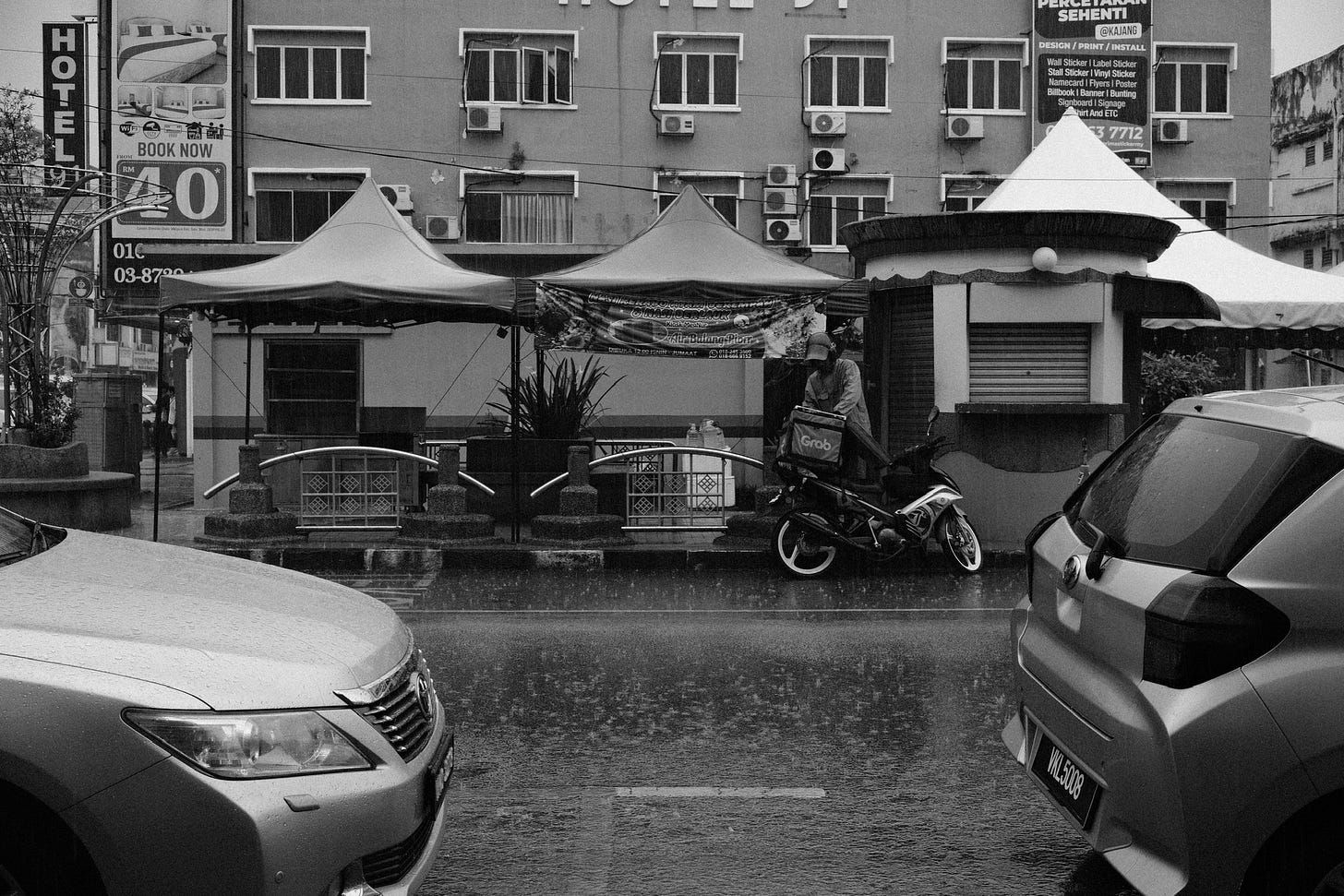Rainy Day Kajang With Black and White: Reflections
Sometimes a car centric infrastructure constructs a hyper reality. A reality built on the car windows.
I woke up at 7.30am today. It was hot and humid. The air reeks of humidity that it repels me. The skin, feeling sticky, the body aching from a bad sleep. I open my window and let some natural light in. There was no sign of a rain.
At 10am, the rain poured. It wasn’t just any rain, It was like god pulled the handle on his super Japanese electric powered motor toilet bowl. Sounds of water droplet beating violently on my old house’s zinc roofing. That, gentlemen is what I call the symphony of god’s toilet flush.
As it was a public holiday, I was inspired to shoot the rain, despite having a non weather sealed camera.
As I was driving along Kajang town, I scoured for every good spot to capture a dramatic moment. Having done my photography stuffs in KL mostly, I realised that with a city that is easy to walk, photographing moments became easy. People were use to seeing all sorts of oddity when they walk in their city. Everyday you encounter a few homeless people, workers chilling by the roadside, hawkers tending to their stalls and an endless possibility of little random encounters.
I grew up in Kajang my entire life. I was sucked in by this little town. Never felt quite safe to leave it and never felt quite bored to abandon this place call home. Kajang, was by all means never a walkable city. At least, it once was. Looking at how the colonial shop houses were arranged, it was once a walking city with bicycles, rickshaws (my guess), and people walking around with their daily chores. As development sprawled, roads needed to be bigger, wider, longer to accommodate the traffic. The increase in car traffic instead of foot traffic. And that is why there exists layouts of shop houses that are so hard to be accessed through parking your car: it was made to be walked to.
As I drive along the town, I found myself a shaded parking. I decided to explore the little town on foot, to walk among it. I found a Grab rider calmly putting on his waterproof Grab jacket, with its distinct green that I am unable to show with black and white photo. I see workers sitting on the staircases, waiting for the rain to go. There were Bangladeshi workers, using an off day to do their groceries. Fruits, vegetables, spices, the rain made no difference. They are the real resident of the town. The actual people living among the streets, going to shops as they were intended to be walked pass.
Having lived my entire life here and spent most of my time watching through windows whether being driven or driving around, I have a sense that I was living in a hyper reality. A reality of a familiar place built on a different view. I passed by the same streets for 26 years, and yet I have never lived among it. In a sense, it was a completely different town with its charms which car windows will never do it justice.
Kajang was a rain town, a colonial town, a Chinese street, an Indian street, a Bangladeshi town, Kajang is whatever we define it and Kajang is how we feel when we walk amongst it.
On a side note, I have nothing against car centric cities or car driven infrastructure. In fact, it was the easiest way for suburban populations to live in relatively cheaper housing while working higher wages in city centres. It just occurred to me that we are all sometimes living in a hyper reality. A reality that reflects partly of the ‘real’ reality. Cheers to more walking in town and city centres.







